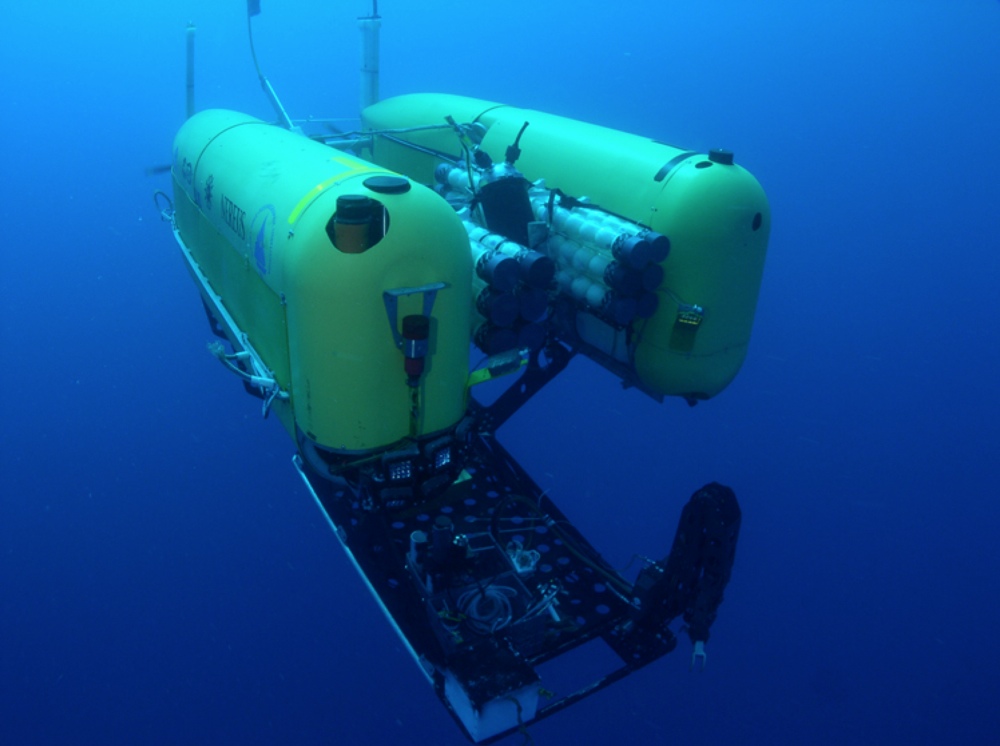Lost! Deep-Diving ROV Implodes 6 Miles Beneath the Sea


A hybrid remotely operated vehicle (ROV) dubbed Nereus was lost while diving 6.2 miles (10 km) beneath the sea surface in a deep trench northeast of New Zealand on Saturday (May 10), representatives for the Woods Hole Oceanographic Institution have confirmed.
Part of the ROV, diving in the Kermadec Trench, may have imploded under pressures reaching a seam-bursting 16,000 lbs. per square inch (psi). (On Earth, humans are exposed to pressures of nearly 15 psi.)
The Kermadec Trench is the world's second-deepest trench, plunging 32,963 feet (10,047 meters) below the sea surface, second only to the Mariana Trench, which reaches 36,201 feet (11,034 m) beneath the surface of the Pacific Ocean.
The deep-diving vehicle, which operates remotely via an optical fiber tether and also as a free-swimming autonomous vehicle, was 30 days into a 40-day expedition to explore the deep-ocean trench aboard the research vessel Thomas G. Thompson. [See Photos of Nereus and Deep-Diving Expedition]
At 2 p.m. local time Saturday (10 p.m. Friday EDT), about seven hours into a planned nine-hour dive to the deepest part of the Kermadec Trench, researchers aboard the Thompson lost contact with the ROV. The researchers spotted floating debris, which was later identified as part of Nereus, suggesting the vehicle had imploded, said representatives for the Woods Hole Oceanographic Institution (WHOI) in Massachusetts, where the vehicle was designed and built in 2008. The ship's crew is collecting the debris to confirm its identity and hopefully reveal information about the implosion.
"Extreme exploration of this kind is never without risk, and the unfortunate loss of Nereus only underscores the difficulty of working at such immense depths and pressures," said Larry Madin, director of research at WHOI. "Fortunately, there was no human injury as a consequence of this loss."
The current expedition aimed to collect images and samples of unusual sea life that can survive the eye-popping pressures of the Kermadec Trench. The trench runs northeast from the North Island of New Zealand to the Louisville Seamount Chain and was formed by a process called subduction, in which the Pacific (tectonic) Plate dives beneath the Indo-Australian Plate.
Get the world’s most fascinating discoveries delivered straight to your inbox.
This isn't Nereus' first gig, either. The ROV is one of just four submersibles ever to reach the ocean's deepest spot within the Mariana Trench, and had also explored the world's deepest known hydrothermal vents in the Caribbean Sea.
"Nereus helped us explore places we've never seen before and ask questions we never thought to ask," said Timothy Shank, a biologist at WHOI. "It was a one-of-a-kind vehicle that even during its brief life, brought us amazing insights into the unexplored deep ocean, addressing some of the most fundamental scientific problems of our time about life on Earth."
The Kermadec Trench runs northeast from New Zealand's North Island to the Louisville Seamount Chain. It is the second-deepest oceanic trench in the world and formed by subduction, a geophysical process in which the Pacific Plate is pushed beneath the Indo-Australian Plate.
Funding for the $8 million Nereus project came from the National Science Foundation, the Office of Naval Research, the National Oceanic and Atmospheric Administration, the Russell Family Foundation and WHOI.
Follow Jeanna Bryner on Twitter and Google+. Follow us @livescience, Facebook & Google+. Original article on Live Science.
Jeanna Bryner is managing editor of Scientific American. Previously she was editor in chief of Live Science and, prior to that, an editor at Scholastic's Science World magazine. Bryner has an English degree from Salisbury University, a master's degree in biogeochemistry and environmental sciences from the University of Maryland and a graduate science journalism degree from New York University. She has worked as a biologist in Florida, where she monitored wetlands and did field surveys for endangered species, including the gorgeous Florida Scrub Jay. She also received an ocean sciences journalism fellowship from the Woods Hole Oceanographic Institution. She is a firm believer that science is for everyone and that just about everything can be viewed through the lens of science.



